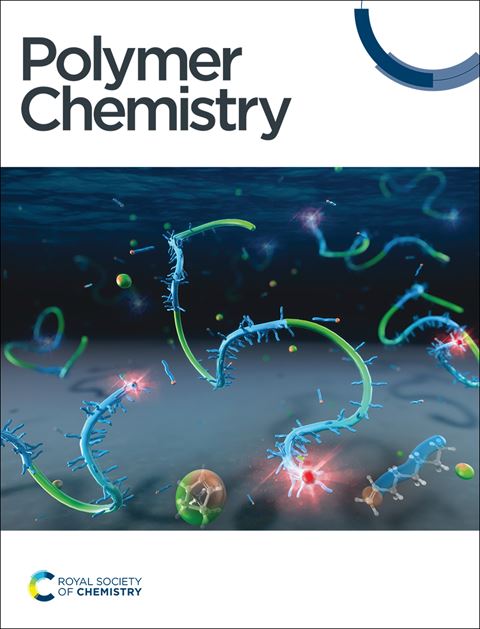Room-temperature magnetism in the crystal of a 1,6-heptadiyne derivative and its processable polymer†
IF 4.1
2区 化学
Q2 POLYMER SCIENCE
引用次数: 0
Abstract
Room-temperature organic magnetic materials have long been a sought-after but challenging topic. Besides the reported organic-based magnets including pure organic radicals, charge-transfer salts, and coordination polymers, we report a novel and alternative approach to fabricating purely organic/polymeric magnets based on the crystal of a 4-substituted 1,6-diyne (M) and its polymer (P). Both the white M crystal and the black P powder samples exhibit room-temperature magnetism. The saturation magnetization of P is about 0.25 emu g−1 and its Curie temperature is higher than 400 K. After repeated recrystallization of M and precipitation of P to thoroughly remove the metal-catalyst residues, the room-temperature magnetism of M and P is tentatively assigned to the stable radicals in the solid samples. The results demonstrated in this work suggest an unprecedented strategy to obtain room-temperature organic magnets.

1,6-庚二炔衍生物和可加工聚合物晶体的室温磁性
长期以来,室温有机磁性材料一直是一个受欢迎但具有挑战性的课题。除了报道的含有机磁体包括纯有机自由基,电荷转移盐和配位聚合物外,我们还报道了一种基于4-取代1,6-二炔(M1)及其聚合物(P1)晶体制备纯有机/聚合物磁体的新颖替代方法。白色的M1晶体和黑色的P1粉末样品都表现出室温磁性。P1的饱和磁化强度约为0.25 emu g−1,居里温度高于400k。经过M1的反复重结晶和P1的沉淀彻底去除金属催化剂残留物后,M1和P1的室温磁性暂时归属于固体样品中的稳定自由基。这项工作的结果表明,获得室温有机磁体的策略是前所未有的。
本文章由计算机程序翻译,如有差异,请以英文原文为准。
求助全文
约1分钟内获得全文
求助全文
来源期刊

Polymer Chemistry
POLYMER SCIENCE-
CiteScore
8.60
自引率
8.70%
发文量
535
审稿时长
1.7 months
期刊介绍:
Polymer Chemistry welcomes submissions in all areas of polymer science that have a strong focus on macromolecular chemistry. Manuscripts may cover a broad range of fields, yet no direct application focus is required.
 求助内容:
求助内容: 应助结果提醒方式:
应助结果提醒方式:


